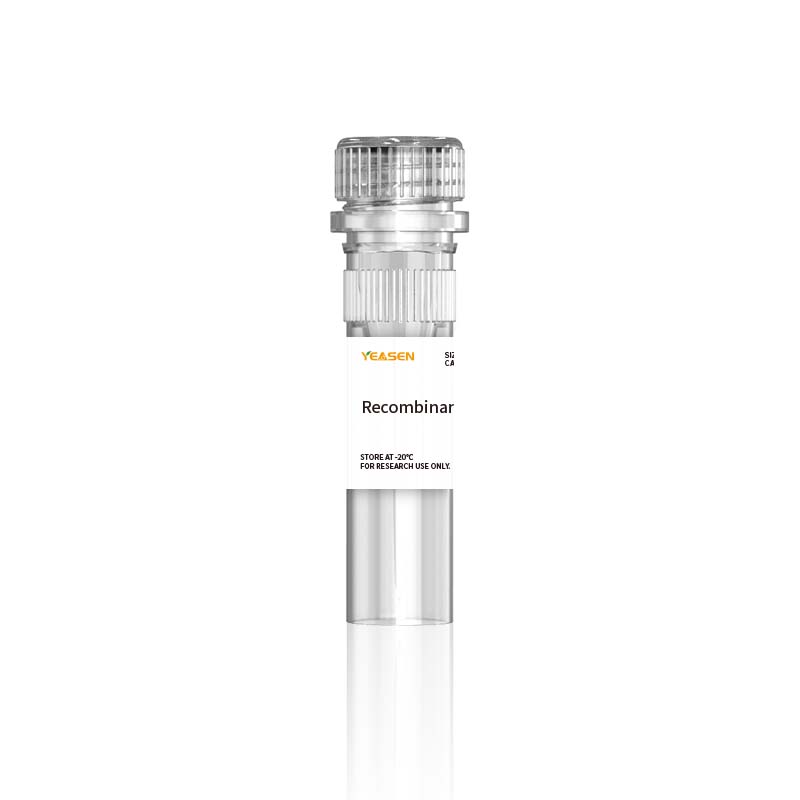Description
ALCAM (activated leukocyte cell adhesion molecule), designated CD166 , is a 100110 kDa type I transmembrane glycoprotein and a member of the Ig CAM family within the immunoglobulin superfamily. ALCAM is expressed on thymic epithelium, microvascular endothelium, activated lymphocytes and monocytes, and monocytederived dendritic cells. Human ALCAM cDNA encodes 583 amino acid (aa), including signal peptide (27 aa), extracellular domain (ECD, 500 aa) with two Vtype and three C2type Iglike domains, transmembrane (22 aa) and cytoplasmic (34 aa) domains. A secreted isoform in endothelial cells that is truncated at aa 133 (sALCAM) antagonizes fulllength ALCAM. ALCAM mediates lowaffinity adhesion with itself or the cysteinerich scavenger receptor CD6 to regulate T cell development, immunological synapses (IS), and cell migration through endothelial junctions. ALCAM on thymic epithelia mediates adhesion to CD6 on CD4+CD8+ T cells. Adhesion of ALCAMexpressing antigen presenting cells and CD6expressing T cells stabilizes the early IS, while later it enhances CD3 effects on T cell proliferation, CD25 expression, and Th1 commitment. High ALCAM expression at the bloodbrain barrier in active multiple sclerosis, and its mouse model (EAE), promotes leukocyte migration to the brain. High ALCAM expression on melanoma cell lines appears to be prometastatic, but antimetastatic activity has been reported in breast cancer.
Specifications
|
Synonyms |
CD166; ALCAM; MEMD; CD6L; KG-CAM |
|
Uniprot No. |
Q13740.1 |
|
Source |
Recombinant Human ALCAM/CD166 Protein is expressed from HEK293 Cells with His tag at the C-terminal. It contains Trp28-Ala526. |
|
Molecular Weight |
Approximately 57 kDa. Due to glycosylation, the protein migrates to 60-80 kDa based on Tris-Bis PAGE result. |
|
Purity |
> 95% as determined by SDS-PAGE and HPLC. |
|
Activity |
ELISA Data: Immobilized Human ALCAM, His Tag at 2μg/ml (100μl/Well) on the plate. Dose response curve for Anti-ALCAM Antibody, hFc Tag with the EC50 of 0.7μg/ml determined by ELISA. |
|
Endotoxin |
< 1.0 EU per 1μg of the protein by the LAL method. |
|
Formulation |
Lyophilized from 0.22 μm filtered solution in PBS (pH 7.4). Normally 8% trehalose is added as protectant before lyophilization. |
|
Reconstitution |
Centrifuge tubes before opening. Reconstituting to a concentration more than 100 μg/mL is recommended (usually we use 1 mg/mL solution for lyophilization). Dissolve the lyophilized protein in distilled water. |
Storage
Transported with ice packs. Store at -20℃ to -80℃, valid for one year.
After reconstitution, store unopened at -20 to -80°C for 3 to 6 months. After reconstitution, store at 2 to 8°C for 2 to 7 days.
It is recommended to store in aliquots and freeze for the first use to avoid repeated freezing and thawing.
Note
1. Avoid repeated freezing and thawing.
2. For your safety and health, please wear lab coat and disposable gloves when operating.
3. This product is for scientific research purposes only.
Product Data

Paiement et sécurité
Vos informations de paiement sont traitées en toute sécurité. Nous ne stockons pas les détails de la carte de crédit ni accès aux informations de votre carte de crédit.
Enquête
Vous pouvez aussi aimer
FAQ
Le produit est destiné à des fins de recherche uniquement et n'est pas destiné à un usage thérapeutique ou diagnostique chez l'homme ou l'animal. Les produits et le contenu sont protégés par des brevets, des marques déposées et des droits d'auteur appartenant à Yeasen Biotechnology. Les symboles de marque indiquent le pays d'origine, pas nécessairement l'enregistrement dans toutes les régions.
Certaines applications peuvent nécessiter des droits de propriété intellectuelle tiers supplémentaires.
Yeasen se consacre à la science éthique, estimant que nos recherches doivent répondre à des questions cruciales tout en garantissant la sécurité et les normes éthiques.

